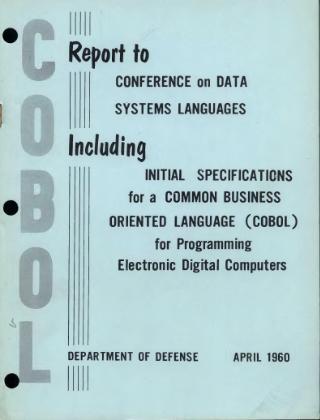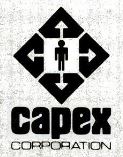Related Research Articles
Computer programming is the process of performing particular computations, usually by designing and building executable computer programs. Programming involves tasks such as analysis, generating algorithms, profiling algorithms' accuracy and resource consumption, and the implementation of algorithms. The source code of a program is written in one or more languages that are intelligible to programmers, rather than machine code, which is directly executed by the central processing unit. The purpose of programming is to find a sequence of instructions that will automate the performance of a task on a computer, often for solving a given problem. Proficient programming thus usually requires expertise in several different subjects, including knowledge of the application domain, specialized algorithms, and formal logic.
In computing, a compiler is a computer program that translates computer code written in one programming language into another language. The name "compiler" is primarily used for programs that translate source code from a high-level programming language to a low-level programming language to create an executable program.

COBOL is a compiled English-like computer programming language designed for business use. It is an imperative, procedural and, since 2002, object-oriented language. COBOL is primarily used in business, finance, and administrative systems for companies and governments. COBOL is still widely used in applications deployed on mainframe computers, such as large-scale batch and transaction processing jobs. However, due to its declining popularity and the retirement of experienced COBOL programmers, programs are being migrated to new platforms, rewritten in modern languages or replaced with software packages. Most programming in COBOL is now purely to maintain existing applications; however, many large financial institutions were still developing new systems in COBOL as late as 2006.

Multiple Virtual Storage, more commonly called MVS, is the most commonly used operating system on the System/370, System/390 and IBM Z IBM mainframe computers. IBM developed MVS, along with OS/VS1 and SVS, as a successor to OS/360. It is unrelated to IBM's other mainframe operating system lines, e.g., VSE, VM, TPF.
PL/I is a procedural, imperative computer programming language developed and published by IBM. It is designed for scientific, engineering, business and system programming. It has been used by academic, commercial and industrial organizations since it was introduced in the 1960s, and is still used.

The IBM Series/1 is a 16-bit minicomputer, introduced in 1976, that in many respects competed with other minicomputers of the time, such as the PDP-11 from Digital Equipment Corporation and similar offerings from Data General and HP. The Series/1 was typically used to control and operate external electro-mechanical components while also allowing for primitive data storage and handling.
In computer science, a high-level programming language is a programming language with strong abstraction from the details of the computer. In contrast to low-level programming languages, it may use natural language elements, be easier to use, or may automate significant areas of computing systems, making the process of developing a program simpler and more understandable than when using a lower-level language. The amount of abstraction provided defines how "high-level" a programming language is.
IBM CICS is a family of mixed-language application servers that provide online transaction management and connectivity for applications on IBM mainframe systems under z/OS and z/VSE.
Adabas, a contraction of “adaptable database system," is a database package that was developed by Software AG to run on IBM mainframes. It was launched in 1971 as a non-relational database. As of 2019, Adabas is marketed for use on a wider range of platforms, including Linux, Unix, and Windows.
RPG is a high-level programming language for business applications, introduced in 1959 for the IBM 1401. It is most well known as the primary programming language of IBM's midrange computer product line, including the IBM i operating system. RPG has traditionally featured a number of distinctive concepts, such as the program cycle, and the column-oriented syntax. The most recent version is RPG IV, which includes a number of modernization features, including free-form syntax.
A data dictionary, or metadata repository, as defined in the IBM Dictionary of Computing, is a "centralized repository of information about data such as meaning, relationships to other data, origin, usage, and format". Oracle defines it as a collection of tables with metadata. The term can have one of several closely related meanings pertaining to databases and database management systems (DBMS):
VisualAge is a family of computer integrated development environments from IBM, which supports multiple programming languages. VisualAge was first released in October 1993 and was discontinued April 30, 2007 and its web page removed in September 2011. VisualAge was also marketed as VisualAge Smalltalk, and in 2005, Instantiations, Inc. acquired the worldwide rights to this product. IBM has stated that XL C/C++ is the followup product to VisualAge.
The Future Systems project (FS) was a research and development project undertaken in IBM in the early 1970s, aiming to develop a revolutionary line of computer products, including new software models which would simplify software development by exploiting modern powerful hardware.
In computer science, automatic programming is a type of computer programming in which some mechanism generates a computer program to allow human programmers to write the code at a higher abstraction level.
LINC is a fourth-generation programming language, used mostly on Unisys computer systems.

Capex Corporation was an American computer software company in existence from 1969 through 1982 and based in Phoenix, Arizona. It made a variety of software products, mostly system utilities for the IBM mainframe platform, and was known for its Optimizer add-on to the IBM COBOL compiler. Capex was acquired by Computer Associates in 1982.
Innovative Routines International (IRI), Inc. is an American software company first known for bringing mainframe sort merge functionality into open systems. IRI was the first vendor to develop a commercial replacement for the Unix sort command, and combine data transformation and reporting in Unix batch processing environments. In 2007, IRI's coroutine sort ("CoSort") became the first product to collate and convert multi-gigabyte XML and LDIF files, join and lookup across multiple files, and apply role-based data privacy functions for fields within sensitive files.

IBM has offered COBOL on many platforms, starting with the IBM 1400 series and IBM 7000 series, continuing into the industry-dominant IBM System/360 and IBM System/370 mainframe systems, and then through Power Systems (AIX) and IBM Z.
Business Controls Corporation is a privately held computer company that developed an application-program-generator and also a series of accounting software packages. These packages were widely enough used for various business magazines to have back-of-the-book ads for companies seeking accountants with experience in one or more of them.
References
- ↑ Deknop, Céline; Fabry, Johan; Mens, Kim; Zaytsev, Vadim (2020), Morisio, Maurizio; Torchiano, Marco; Jedlitschka, Andreas (eds.), "Improving a Software Modernisation Process by Differencing Migration Logs", Product-Focused Software Process Improvement, Cham: Springer International Publishing, vol. 12562, pp. 270–286, doi:10.1007/978-3-030-64148-1_17, ISBN 978-3-030-64147-4, S2CID 227129964 , retrieved 2021-02-28